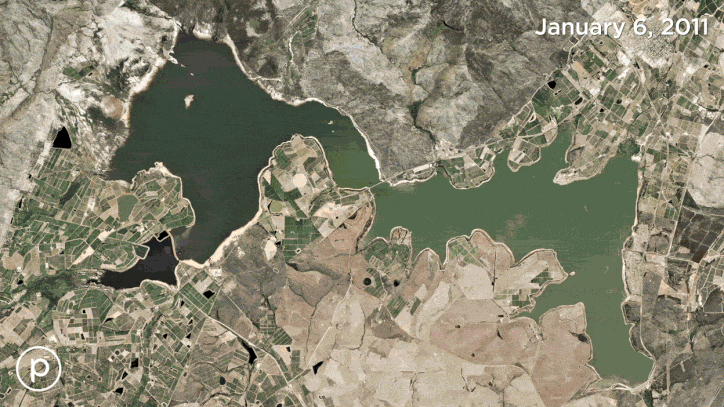LONDON (THOMSON REUTERS FOUNDATION) - Drought-stricken Cape Town could run out of water as soon as April, but South Africa is not alone in its struggle as ever more world cities battle acute water shortages.
Water scarcity already affects more than 40 per cent of the world's population and is expected to rise due to global warming, with one in four people projected to face chronic or recurring shortages by 2050, according to the United Nations.
Already hosting more than half the world's people, cities are at the forefront of the problem, as population growth increases pressure on reserves, which are already stretched by too little rain and too much waste.
Following are some of the crisis cities:
SAO PAULO
The reservoir supplying Sao Paulo, Brazil's largest city and a metropolitan region of 20 million people, nearly dried up in 2015, as the country faced its worst drought in 80 years, depriving many residents of water for 12 hours a day.
The city was criticised by UN experts for losing 31 per cent of its treated water to leaks and theft, compared to an average of 16 per cent in the United States.

LIMA
Rain in the Peruvian capital is almost non-existent, with average annual precipitation of 7 millimetres.
Water is expected to become scarcer still as global warming thaws Andean glaciers, reducing flows as the ice disappears.
The city has been working to improve watersheds in the Andes mountains, while residents in hillside shantytowns overlooking the city have been using nets to condense thick fog from the Pacific Ocean into drainage pipes.
AMMAN
Amman, the capital city of Jordan, has no nearby source of water and regularly experiences drought, while its lower-lying parts are inundated when it rains heavily.
The city recycles the vast majority of its waste water and uses it for irrigation but a refugee influx from neighbouring Syria has put additional pressure on reserves countrywide.
The government is moving ahead with new pipelines for groundwater and projects to desalinate water from the Red Sea.
MEXICO CITY
Despite the heavy downpours that come each rainy season, Mexico City, a mega-city of 21.3 million people, depends on depleting aquifers and has long struggled with providing enough water to its inhabitants.
Built on what was once a lake, it is also prone to flooding.
Having over-pumped local supplies so much that land is sinking, the city is working to redesign its water system, which sources a third of its supplies from nearby river basins and valleys.
MELBOURNE
The Australian city suffered the so-called 'Millennium drought' between 1997 and 2009. It was one of the worst dry spells on record, affecting other major cities such as Perth, Adelaide and Sydney.
Melbourne has since slashed per capita water use by half and installed desalination and recycling plants.
KABUL
Originally planned to support about one million people, the Afghan capital is now home to more than 4.6 million, according to US government estimates.
Several unseasonably dry winters, along with the sprawling population, have strained supplies. Those who can afford to, have dug unregulated wells to tap a falling water table.
SOURCES: United Nations, Reuters, Thomson Reuters Foundation.

